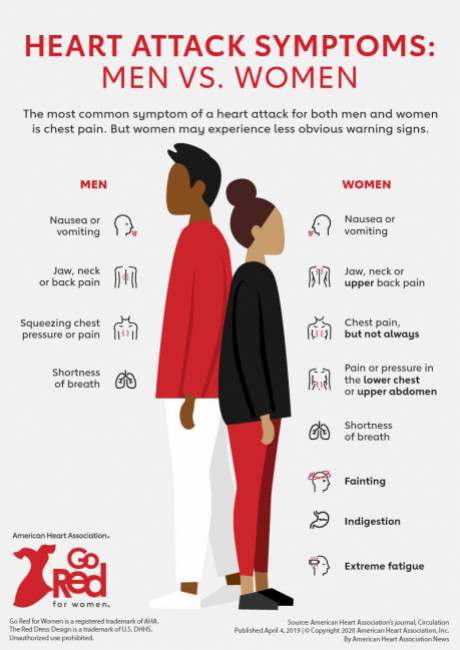You may have some or all of these symptoms, including symptoms with or without chest discomfort.
1. Pain/tightness in chest
A common symptom is a feeling of tightness, pressure or discomfort in your chest. Chest discomfort is caused by blockages within your main heart arteries. Women also tend to have blockages in the small arteries coming off your heart (known as microvascular coronary disease). For this reason, chest discomfort may not be the worst, or most noticeable, symptom in women.
2. Shortness of breath
You may feel like you can’t breathe properly or you can’t get enough air into your lungs. Some women may even experience difficulty breathing a few weeks before having a heart attack.
3. Nausea/vomiting or sweating
You may feel really queasy or actually vomit. You may also feel sweaty and clammy.
4. Lightheadedness/dizziness
You may feel light-headed, dizzy or not quite ‘with it’.
5. Pain in other parts of your body
You may feel pain or pressure in your jaw, neck, arm, lower or upper back, belly or torso. You may feel like you have indigestion or reflux. Remember pain is your body’s way of telling you something is wrong.
6. Unusual fatigue/weakness
You may suddenly feel very tired or very weak.
| No two heart attacks are the same. Not all these symptoms may occur. If you are experiencing some of these symptoms, call 111 immediately. While your symptoms may turn out to be harmless, they may also be the result of a heart attack. |







